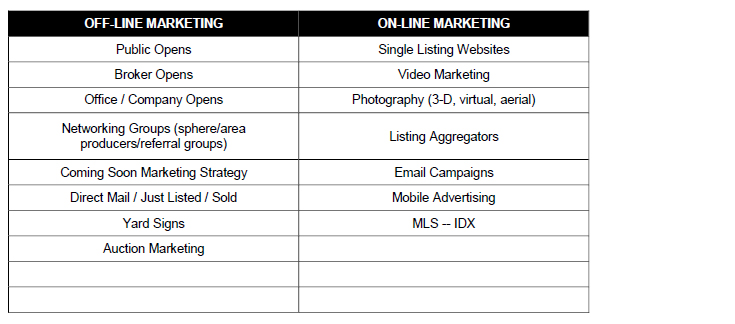Using Generational Preferences in Your Property Marketing Mix

While there can be wide variation within generational groupings, and we shouldn’t fall into the trap of believing in rigid stereotypes, there is, however, enough of a pattern to generate some useful guidelines:
The Silent Generation, those born between years 1900 and 1945, are typically disengaged from technology. Their signature product is the automobile; for communication, they prefer face-to-face, letters and memos.
Baby boomers are those born between the years 1946 and 1964. Their signature generational product is the television. They are less formal in their communication than the Silent Generation, but still prefer doing business in person or via conversation on their cell phones.
Generation X, those born between 1965 and 1976, grew up during the advent of the personal computer. Their preferred mode and style of communication is direct and immediate; therefore, they will typically appreciate emails over phone calls and in-person meetings.
Millennials are complete digital natives for whom the signature product is the smartphone. They tend to prefer digital and informal methods of communication such as text, Twitter or Instagram. If something is important, though, they will appreciate an email or a voicemail that they can review later.
With these preferences in mind, when you are planning a property listing and marketing strategy for a seller, you will want to take into account the market economics (Is it a buyer’s or a seller’s market?) that the property is in—and the geographic and demographic realities of the area (What kind of buyers do you want or will you be able to attract?).
According to NAR’s Profile of Home Buyers and Sellers, for all of the generational groups described above, online search and real estate agents consistently ranked No. 1 and No. 2 as their most-used methods of finding a property. Furthermore, mobile apps, online video sites, yard signs, and open houses come in at the No. 3 through No. 6 spots for all the groups (but in a different order of preference for each). Other methods that don’t rank as high as these, but which can be reliable under the right circumstances, include: print newspaper ads, home builders and printed “home books.”
Based on this research, it’s safe to assume that technological and non-technological methods for finding and selling properties are being used in a blended, overlapping, or complementary way. The key when you are serving seller clients is to devise a marketing strategy for the property that has the right mix of marketing activities so that you minimize wasteful activities and maximize effective ones. You’ll need a different marketing toolkit for different homes and different markets and different circumstances.
Below is a comprehensive list of the marketing activities you may have at your disposal. The specific ones you choose to use, the way you (re)combine them, and the relative emphasis or resources you devote to each will have an impact on your success marketing the property within its particular market:
In many ways, coming up with a marketing plan is an act of creativity based on practical experience, much like creating a recipe of your own or building something without instructions. The more skilled you are, the more you will “just know” how.
Even if you already have a good feel for what might work, there is tremendous value to documenting and tracking your efforts over the long term, even down to the property level. In the same way that you should be tracking ROI (return on investment) for your own business prospecting (client acquisition) activities, you should also have an established process for tracking ROI for each of the different tools in your property marketing toolkit. Doing this will make clear and visible when and why you have success, so you can add this information to your base of experience.
There is nothing better than putting information and actions to paper so that you can see patterns emerge and see something that you didn’t even realize was there. All of this can help inform and add precision and cost-effectiveness to future marketing planning.
Source: rismedia.com
















 Accessibility
Accessibility